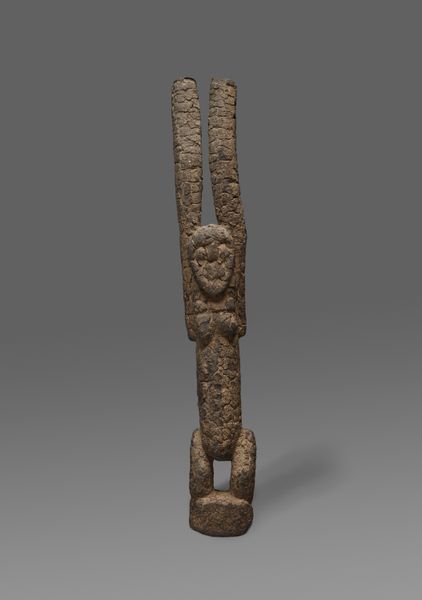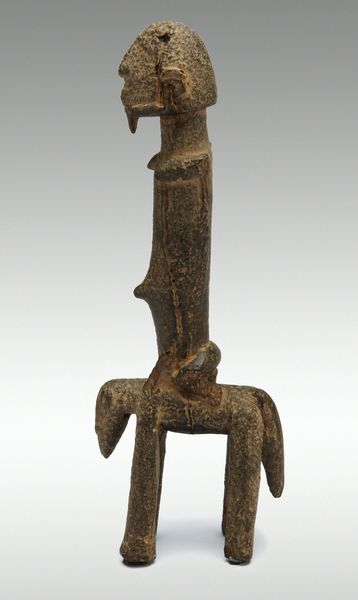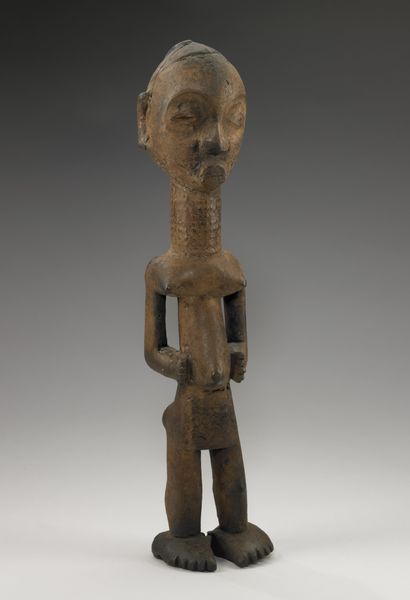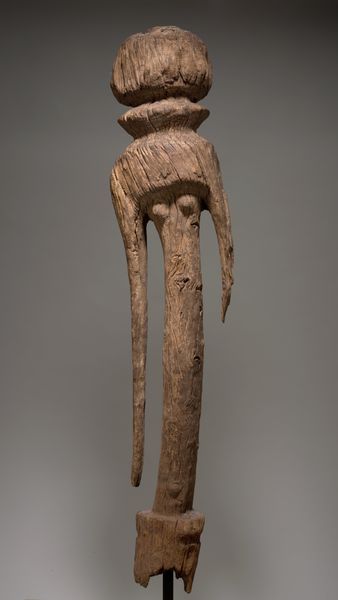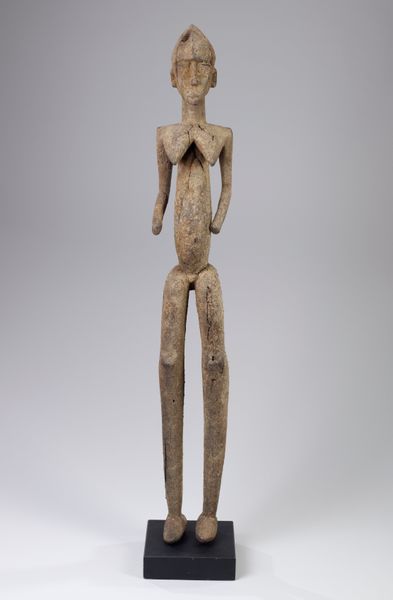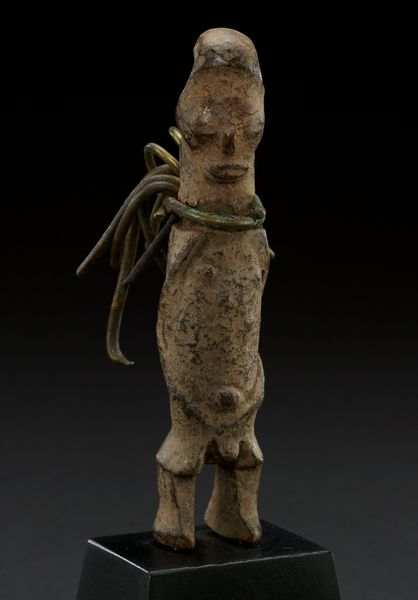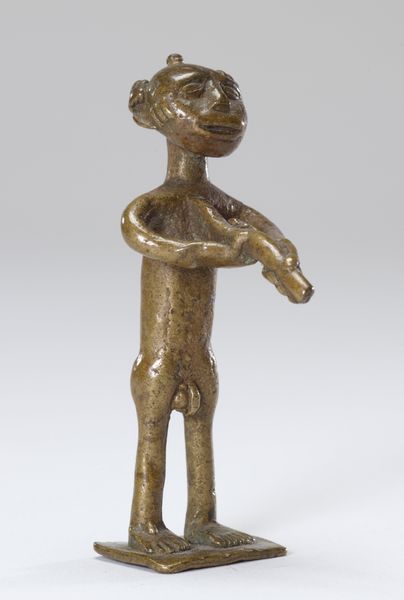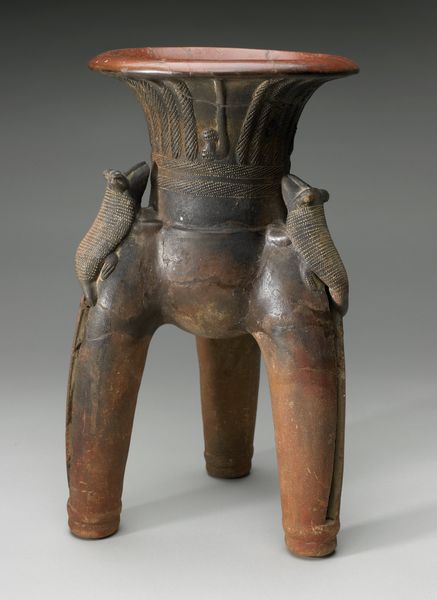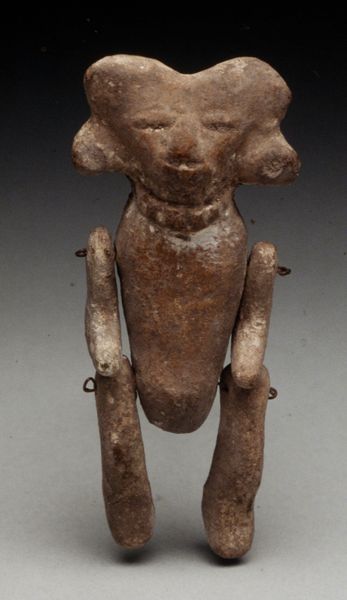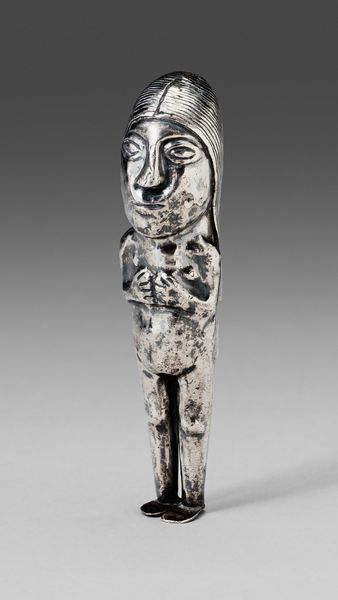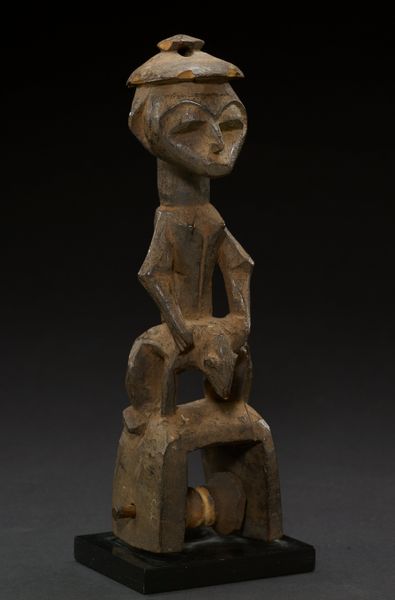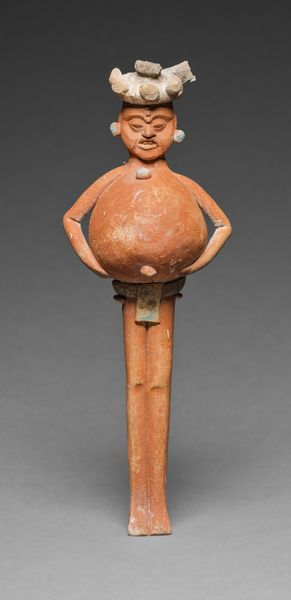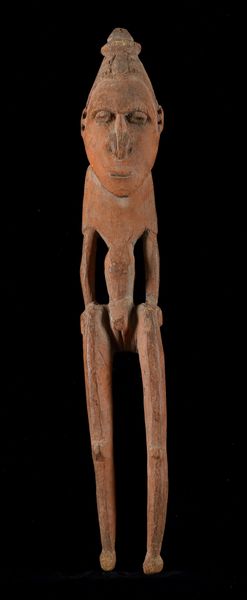
metal, sculpture
#
african-art
#
metal
#
sculpture
#
figuration
#
form
#
sculpture
Dimensions: 4 3/8 x 1 3/8 x 1 1/2 in. (11.11 x 3.49 x 3.81 cm)
Copyright: Public Domain
Curator: Immediately, this small metal sculpture evokes a feeling of supplication or quiet reflection, doesn’t it? Editor: It does. Let's delve into the details. This artwork, titled "Figure," is attributed to the Lobi peoples, dating to approximately the 20th century. It currently resides here at the Minneapolis Institute of Art. Curator: The material itself, likely iron, contributes to the sense of austerity and resilience. And the kneeling posture—it seems deeply ingrained in religious or spiritual practice, doesn’t it? Considering themes of devotion across cultures? Editor: Exactly. Among the Lobi, such figures are more than mere aesthetic objects. They're often viewed as intermediaries, mediators between the earthly realm and the spiritual world. The posture signifies humility but it could also indicate negotiation. Considering power structures within the community is relevant. Curator: I appreciate that, recognizing their performative agency within a cultural framework, but look how the arms curve up and back, how the hand rests just so. There is no adornment or other visual barrier between this figure and its public—a potent comment on the need for greater connectivity with marginalized communities. Editor: And the politics of imagery at play. While devoid of excessive ornamentation, its presence still served specific social and cultural functions. Iron itself, a precious material. Curator: Right. Beyond a precious metal, there is so much labor that goes into manipulating this raw material, it could be understood as a signifier for cultural knowledge production and material strength. How do such depictions impact the politics of personhood and gender? Editor: That’s precisely the point! Examining the agency, the institution through which these figures were perceived needs to be put into the question. It brings another layer to interpreting how the museum engages with culture. Curator: Thinking about those historical institutional contexts is crucial. Thanks to that socio-historical perspective. Editor: Thank you. Recognizing this sculpture beyond a precious material encourages us to reimagine this work with renewed intersectional context.
Comments
No comments
Be the first to comment and join the conversation on the ultimate creative platform.
